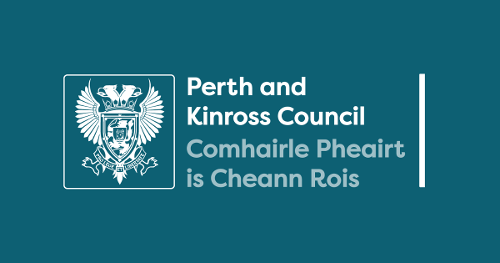Digital Perth and Kinross 2023-2027
Digital Strategy - Here's the difference we can make
Examples of where our digital strategy can help make a difference:
Bill: using technology to live independently
Bill is retired and lives alone. He has multiple health conditions including diabetes, a heart condition and early signs of dementia. As part of our Smart City Initiative, modern technology, including Internet of Things (IoT) sensors have been installed in his home. This is allowing his medical conditions to be monitored remotely, while enabling him to continue to live independently in a safe and secure environment at home. His cottage has been fitted with telecare sensors that warn of smoke or fire, if he wanders outside at odd times or if his heating is too high or too low. He already wears a sensor in case he falls in the home: these automatically trigger on-site help from a nearby or remote responder.
Tomas: nurturing tech talent/developing local tech incubator
Tomas is 17 and wants to study at UHI Perth before setting up his own games design business in Crieff. He uses a loan laptop at school and at home for studying and online gaming with friends. For his Gold Duke of Edinburgh Award, he runs essential digital skills classes for people who live alone and are at risk of isolation. His "students" have formed their own online friendship group.
Heather: using data for better outcomes
Heather is a Housing Officer. She needs accurate, up-to-date information on demand, to help her target resources to tenants most in need. Dynamic information feeds from new Internet of Things (IoT) and sensor technologies automatically update existing housing and mobile working systems, helping her monitor temperature, humidity and CO2 across our social housing estate. She is able to use this data to better target help and sees real benefit to tenants, as this early intervention means she can prevent issues happening rather than only react to them after they have happened. These technologies are also helping the Council make informed decisions for managing its housing stock, including early identification of abandoned properties and fuel poverty initiatives.
Ben: making the most of his visit to Perth
Ben is visiting Perth for the first time with his family. Ben uses a mobility scooter so they like to plan ahead, online. When out in Perth, they use public Wi-Fi, to find out about accessible local attractions and places to eat, make bookings and leave feedback. They use public transport and buy a family e-ticket that covers all their journeys. Digital bus stops give them real-time updates about services.
Rebecca: protecting our most vulnerable people
Rebecca is a care assistant. The Service in which she works is implementing new technology to transform delivery of Care at Home services. The new ways of working make a big difference to Rebecca as it removes lots of manual processes and any need for recording information multiple times. This means she can spend more time ensuring her clients receive the care they need. Rebecca's managers and support team also benefit from the new technology: they are automatically provided with management information not previously available, allowing a greater focus on care delivery.
The new solution includes automated scheduling which optimises care at home resource needs, based on criteria such as location, skills and gender. When events such as new clients or staff absences occur, the system automatically replans the care assistant schedules to reflect the changed situation.
David: getting joined-up help when it really matters
David completes a single online form the day after he becomes unemployed. The information this captures is automatically flowed to all the relevant Council business areas that may be called upon to help. Within these business areas, staff have on demand access to both a single, consistent record about David and real-time information about what interventions are being delivered by other Council areas. Submission of his form systematically signposts the range of additional help available including free school meals for his children and loan digital equipment to help apply for jobs online. Council managers have access to comprehensive data, in one place, covering the organisation's end to end support for the newly unemployed to inform resourcing, target services and future demand management.
Frances: receiving a better end to end service
Frances logs a request on the Council's online services system to have a pothole filled in, uploading a picture of the pothole and location. She receives an automated acknowledgement via email that her request has been logged and is advised of next steps, including an estimated timescale for resolution. Frances's service request is automatically sent to our mobile working system which schedules the work. A roads maintenance engineer receives information about the job on his phone, telling him where the pothole is. He completes the work then updates the request on his phone to say the job has been completed. This triggers an automated email update to Frances, who appreciates being kept up-to-date at all stages through to successful resolution of her request.




